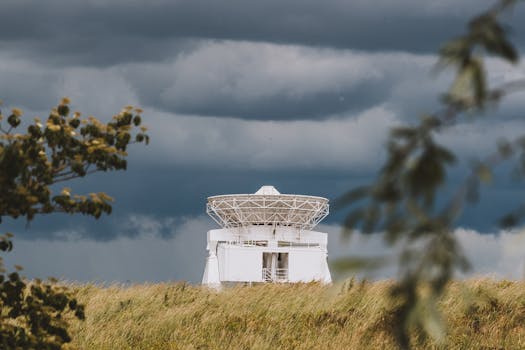GEO Satellites: Unlocking the Power of Geostationary Orbit
GEO satellites are a crucial part of modern satellite communications, providing a wide range of services including television broadcasting, telecommunications, and weather forecasting. In this article, we will delve into the world of GEO satellites, exploring their history, technology, and applications.

GEO satellites, or Geostationary satellites, are a type of satellite that orbits the Earth at an altitude of approximately 36,000 kilometers, which is the same distance as the Earth’s equatorial radius. This unique orbit allows GEO satellites to remain stationary relative to a fixed point on the Earth’s surface, making them ideal for a variety of applications. GEO satellites have been in use for decades, with the first GEO satellite, Syncom 2, launched in 1963. Since then, the technology has evolved significantly, with modern GEO satellites providing a wide range of services including television broadcasting, telecommunications, and weather forecasting.
At the beginning of our discussion on GEO satellites, it is essential to understand the science behind their operation. GEO satellites are placed in a geostationary orbit, which is a circular orbit that lies in the equatorial plane of the Earth. This orbit is special because it allows the satellite to complete one orbit around the Earth in exactly 24 hours, which is the same amount of time it takes the Earth to rotate once on its axis. As a result, a GEO satellite appears to be stationary in the sky, which makes it ideal for applications that require a fixed antenna pointing, such as television broadcasting and telecommunications.
The technology behind GEO satellites is complex and has evolved significantly over the years. Modern GEO satellites are equipped with advanced transponders, which are devices that receive and retransmit signals. These transponders are capable of handling a large number of signals simultaneously, making them ideal for applications such as television broadcasting and telecommunications. Additionally, GEO satellites are equipped with advanced propulsion systems, which allow them to maintain their position in orbit and make adjustments as needed.
In terms of applications, GEO satellites play a crucial role in modern society. One of the most significant applications of GEO satellites is television broadcasting. Many television channels around the world use GEO satellites to broadcast their signals, allowing them to reach a wide audience. Additionally, GEO satellites are used for telecommunications, providing connectivity to remote areas and enabling global communication. Weather forecasting is another critical application of GEO satellites, with many weather satellites in geostationary orbit providing vital data on weather patterns and storms.
Another significant application of GEO satellites is in the field of navigation. GEO satellites are used to provide location information and timing signals, which are essential for navigation systems such as GPS. Additionally, GEO satellites are used for Earth observation, providing valuable data on the Earth’s climate, oceans, and land surfaces. Furthermore, GEO satellites are used for space exploration, serving as a communication relay between spacecraft and Earth.
Despite the many advantages of GEO satellites, there are also some challenges associated with their use. One of the significant challenges is the risk of collisions with other satellites or space debris. As the number of satellites in orbit increases, the risk of collisions also increases, which can have significant consequences for the satellite and the services it provides. Another challenge is the issue of orbital congestion, which occurs when there are too many satellites in a particular orbit, causing interference and reducing the effectiveness of the satellites.
In conclusion, GEO satellites are a crucial part of modern satellite communications, providing a wide range of services including television broadcasting, telecommunications, and weather forecasting. The technology behind GEO satellites is complex and has evolved significantly over the years, with modern GEO satellites equipped with advanced transponders and propulsion systems. While there are challenges associated with the use of GEO satellites, their benefits far outweigh the risks, making them an essential part of modern society.
As we look to the future, it is clear that GEO satellites will continue to play a vital role in satellite communications. With the increasing demand for satellite services, the development of new technologies and applications will be crucial in meeting this demand. Additionally, the issue of orbital congestion and the risk of collisions will need to be addressed through the development of new regulations and technologies. Nevertheless, the future of GEO satellites looks bright, with many exciting developments on the horizon.



